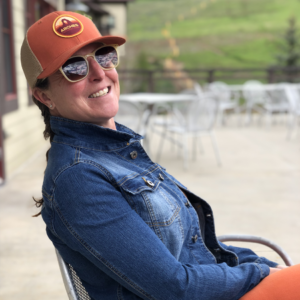Web Conventions: Creating a User-Friendly Navigation
The days of single-page websites are gone. As the internet has grown, so has our knowledge of what does and does not work, and the emergence of search engines and, specifically, search engine optimization (SEO) has changed how sites are built.
Content is king, and if you want to be easily found online, you’re going to need a good amount of original, relevant copy about you and your industry.
To add another twist: too much copy pertaining to too many topics on just one page can dilute your visibility for all of those topics. That means you need a multi-page website for your content strategy to be effective. And as soon as you have multiple pages you need a site navigation, and there are conventions about how to do it.
Don’t Go Changin’
One of the essentials is consistency. Depending on the size of the site, you could use a header navigation, sidebar navigation, footer navigation, or a combination of the three. Users are accustomed to looking in all of these places for links (though the footer is a poor place for your main navigation) but once you’ve picked one, stick to it.
If your site has four main sections, the links to which are featured prominently at the top of the home page, keep them there! If your main navigation moves around from page to page, it will confuse your visitors and you risk losing them, as well as a conversion. There’s nothing wrong with having multiple menus, but each one should have its own consistent real estate on each page throughout your entire site, and should function the same as well.
Let It Breathe
Your navigation also needs to be well-styled so that it’s easily identifiable. If people can’t quickly find the links to the rest of your content, they’re not going to see it. Part of this is alleviated by the consistency in positioning, but an overcrowded page can prove challenging to navigate no matter how familiar the user is with it.
White space is a good thing – giving the different elements of your site ‘room to breathe’ will make your site look better and allow visitors to more easily find things at a glance. Clearly marked tabs, text, or boxes further separate your navigation from the rest of your content, so not only can your visitors easily find it, but it can also draw their eyes to it and keep them moving through your site to more of your pages.
Where Am I?
While not necessarily a web convention, it’s always a good idea to remind your users where they are. A simple graphic indicator on navigation links can differentiate the current section or page that a visitor is on, which can be helpful especially if you have multiple pages under each section. One great example of this would be on an eCommerce site where products are arranged into many categories and sub-categories.
With so many links displayed, a visual cue in the current navigation tells visitors exactly where the are which can help them navigate to other pertinent pages quickly without the possibility of clicking back to the same page. It’s a simple solution that saves a few seconds here or there, but even something as small as that can make a difference in usability and how people feel about your site.
Take a look at your site: how does it stack up to these conventions? Can a new user to your site easily and quickly find their way around using your navigation? Feedback can be helpful to determine what is or isn’t working – maybe ask your fans and followers on social media, or even just a family member who might not be so familiar with site.
We know site navigation can be a lot to handle on your own. As a Denver web design company, we can take this off your hands and make sure it’s done right. Contact us today to set up a free needs analysis meeting >
Other Articles
Navigating the Off-Season: Marketing Strategies for Outdoor, Overlanding, and Camping Brands
The world of outdoor adventure, overlanding, and camping is fueled by the passion for exploration, nature, and the thrill of...
Mastering Black Friday Cyber Monday Campaigns: Strategies for Outdoor Retail Brands
Black Friday Cyber Monday (BFCM) has become a pivotal period for businesses across various industries, and the outdoor retail sector...
Why Outdoor Retailers Must Plan Black Friday Cyber Monday Campaigns Well in Advance
For online retailers in the outdoor industry, the Black Friday Cyber Monday (BFCM) weekend represents a significant sales opportunity. However,...



